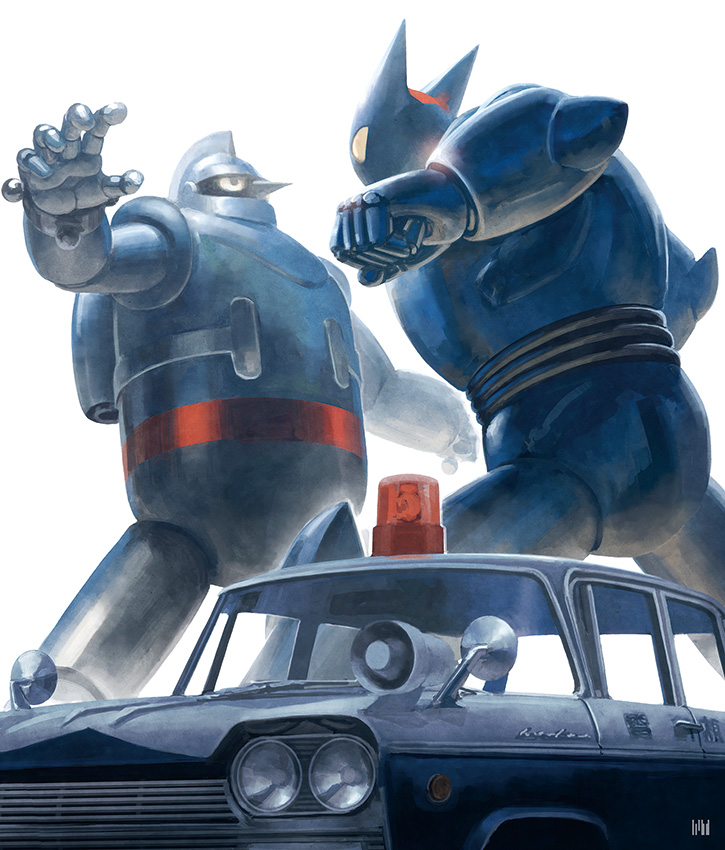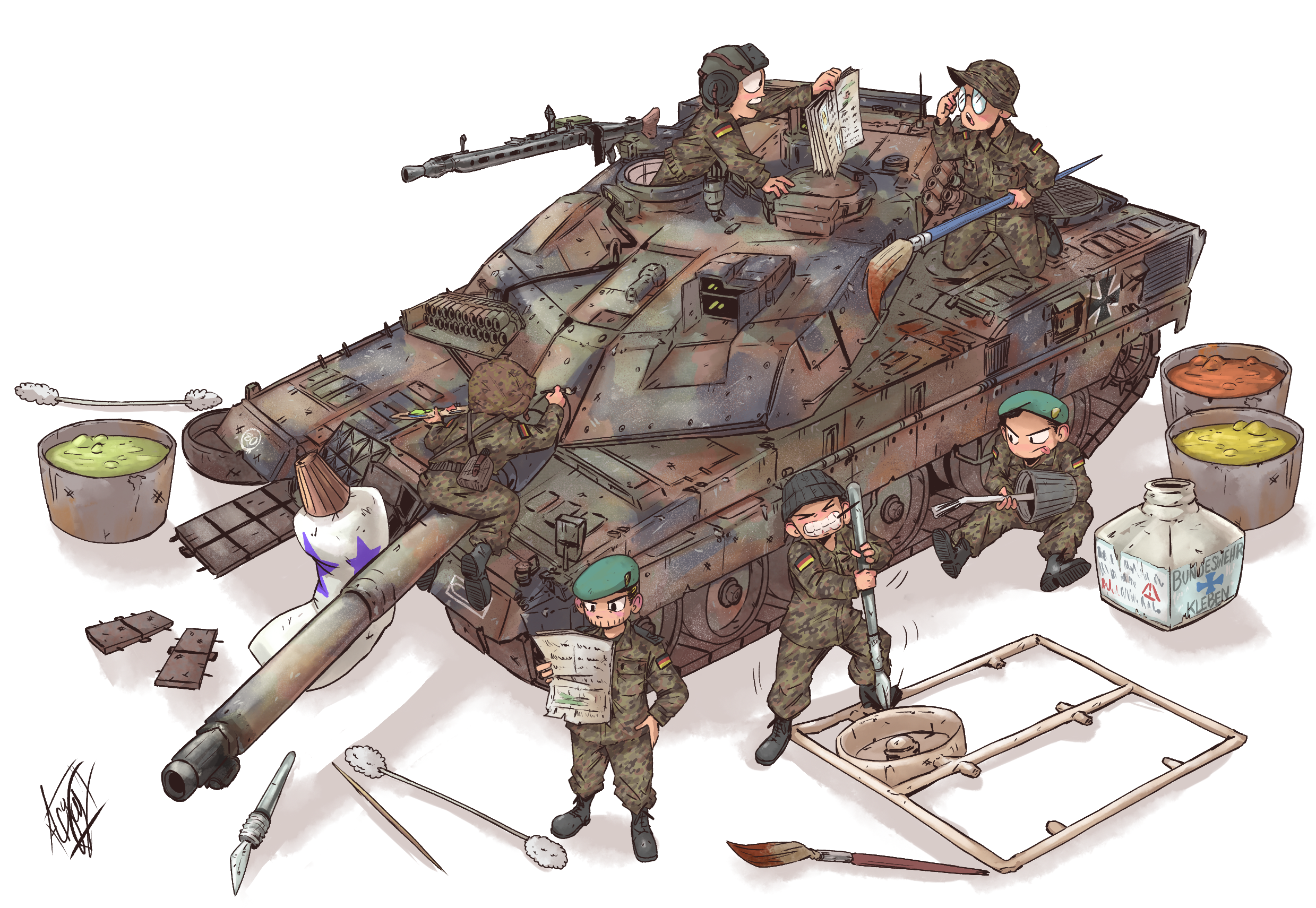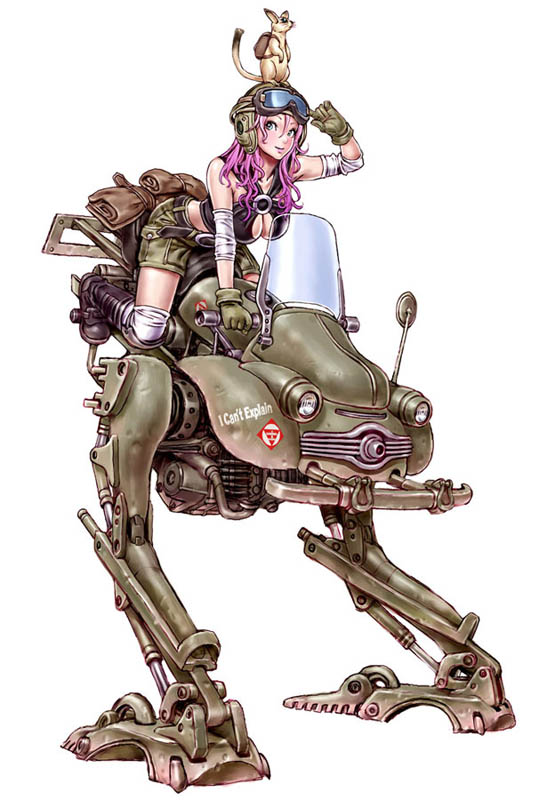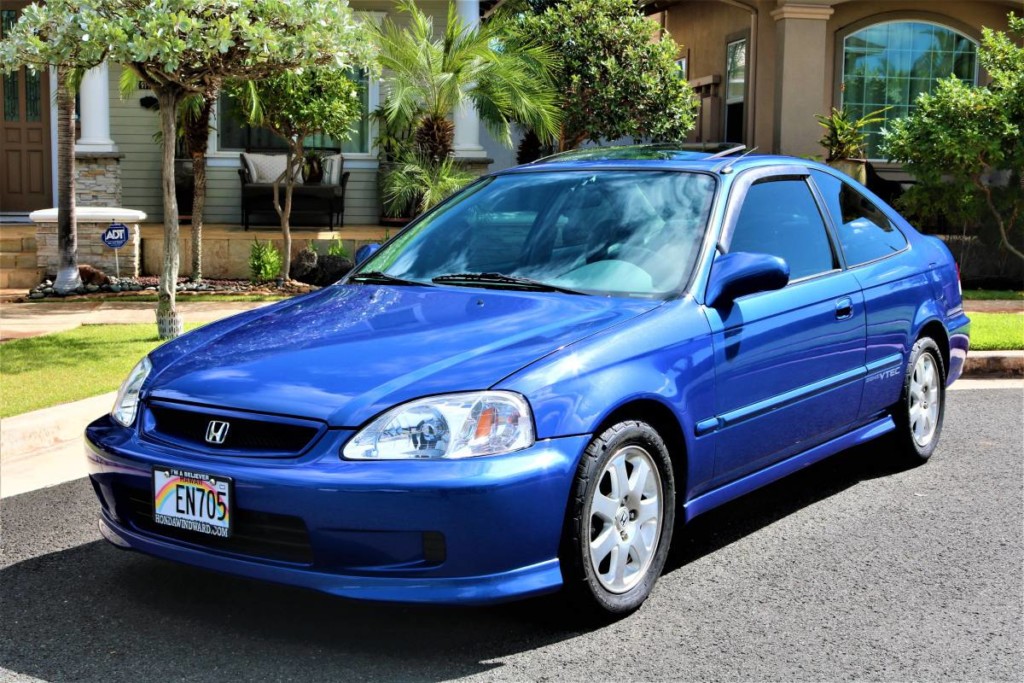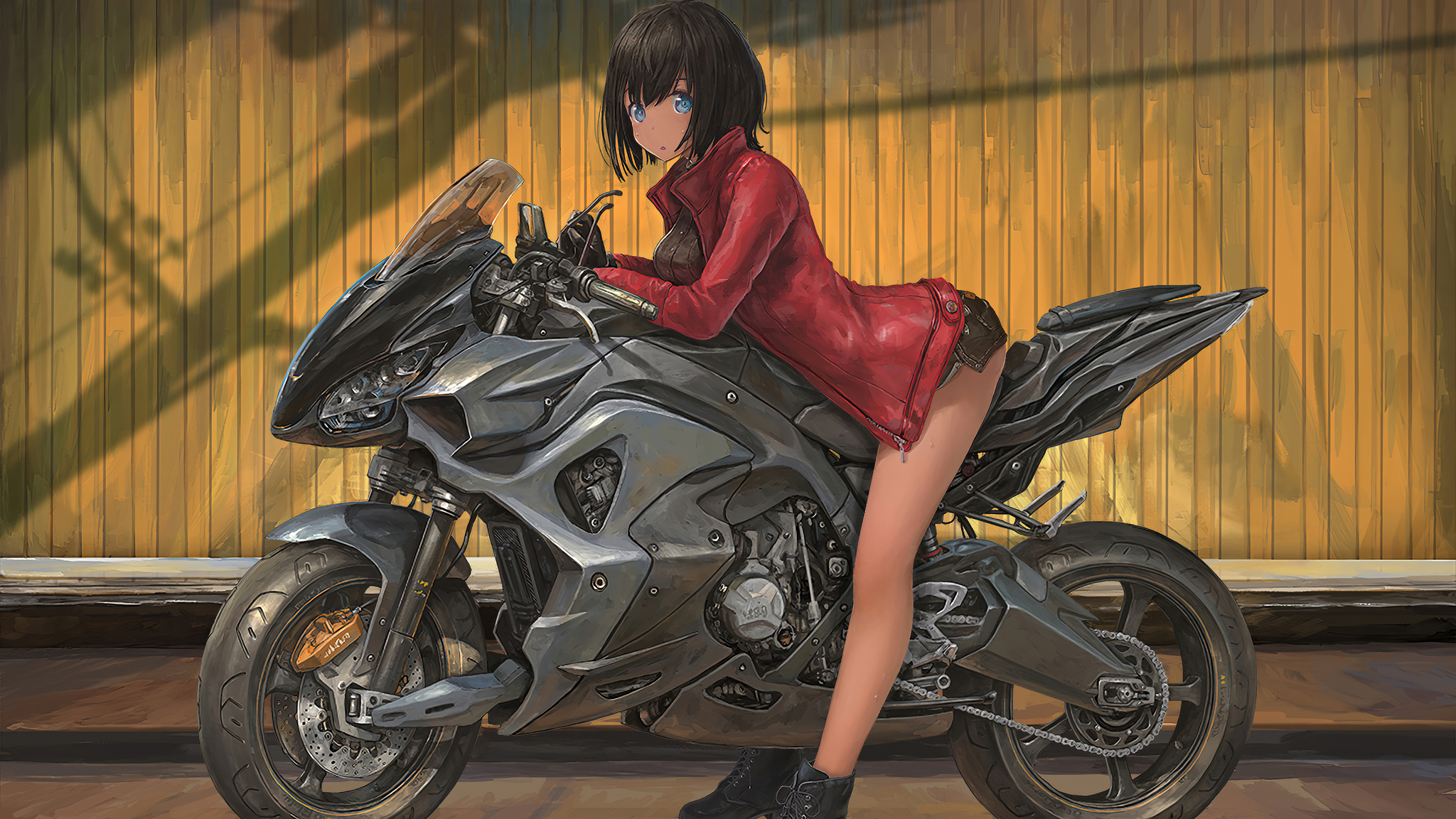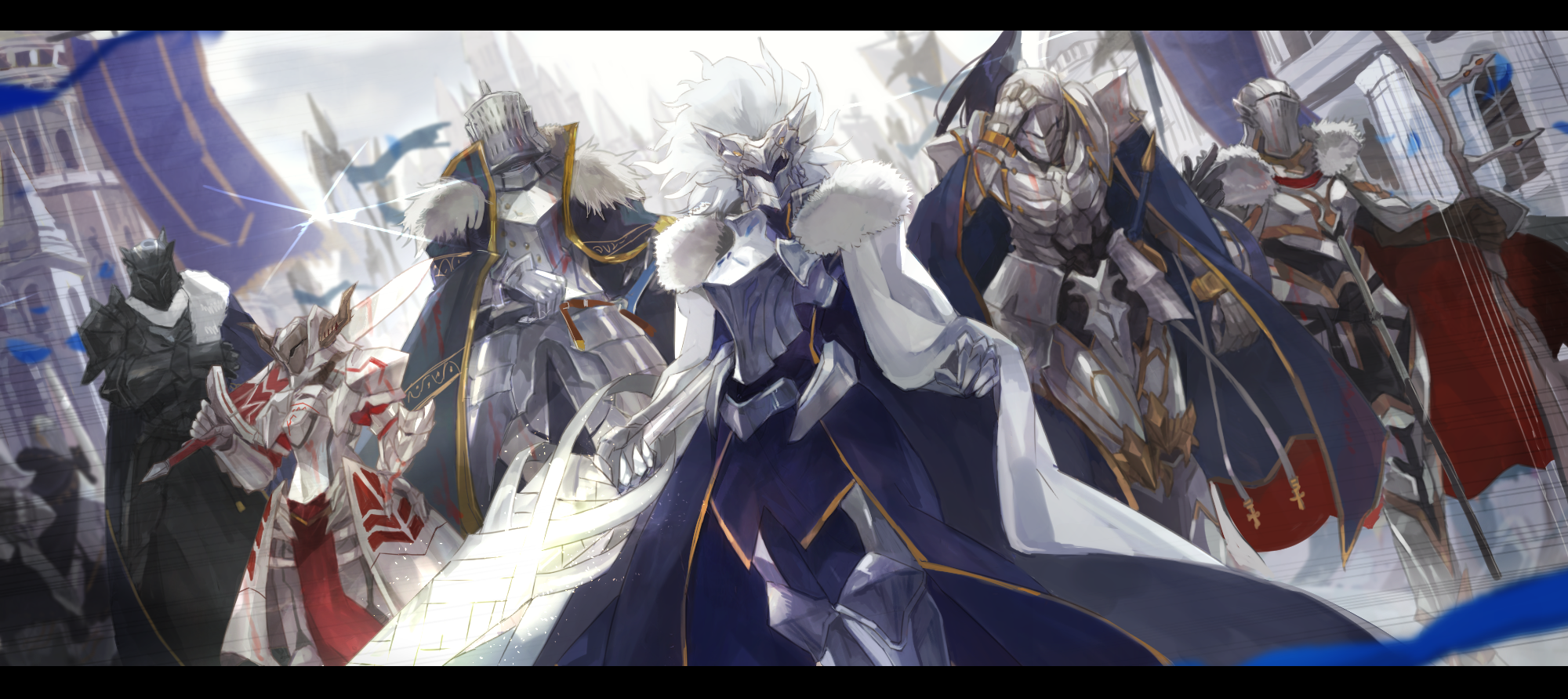Mecha Rules: Revised Vehicles Rules
Nov 7, 2024 17:04:14 GMT -6
Post by Amalvi on Nov 7, 2024 17:04:14 GMT -6
Mecha rules


How to play with “character vehicles”. This applies mostly to mecha, but these rules are also meant to be used for things like cars, tanks, helicopters, bikes, etc. “Mecha” will be used throughout the rules for simplicity and to distance oneself from the horrible vehicle rules in book 2. However, the word “vehicle” can be used interchangeably.
These rules, however, do not apply to rockets, trains, ships, spaceships or, in general, vehicles that simply do not interact with characters. These are outside the scope of something that realistically would be on an equal field with playable characters. A giant mecha or a helicopter can have a fight with a vampire or an angry ork. A fighter jet or a rocket cannot
Mecha for the most part behave exactly like characters do. The simplest way to describe the mechanical aspects of mecha is that they are a modification of the physical stats of the pilot/driver. As a summary, mecha are stronger, faster and more resistant than most regular characters, but they are expensive and require constant maintenance, as they don’t have as many hitpoints and are unable to heal, since they can only recover hit points through lengthy craft checks.
You can upgrade them and get equipment in the same way as any other character: by finding it, buying it or crafting it, and just like characters the limit of what a mecha can carry or have installed is determined by common sense. There’s mecha-only equipment, but for the most part mecha can use all equipment and items that regular characters already can use with the exception of power armor, as the power mechanism that enhance a living body get in the way and break these machines that run on engines.
Obviously, as characters all mecha have the traits of Mindless and Machine. They also have the trait of being Auto-Stabilized.
1: Stats.
Mecha have only 3 stats that range from 1 to 6. A zero in any of these stats means the mecha just won’t move nor work.
- POWER: how “Powerful” the vehicle internals are, the strength of its engine and parts. It serves as the effective Strength stat of the mecha. More info in the Arms section in equipment
- MANEUVER: how nimble and how much “finesse” the vehicle has. It is equal to the dots in the maneuver skill from the pilot. This skill is by default Drive or Pilot, depending on which drive train the mecha uses, but Alternative Control systems can change it. It serves as the effective dexterity stat of the vehicle
- CHASSIS: how well put together and “resistant” the vehicle is; how much punishment it can take. It serves as the effective constitution stat of the vehicle
When controlling a mecha, the pilot uses his own skills and abilities and as well as their own mental and social characteristics, with their physical characteristics only being used if they are targeted themselves for saving throws and similar (for example if they have to resist poison) or for initiative
2: Drive Train.

• Walker: Mecha will move exactly the same movement rules as any other character. Uses Pilot
• Tracks: The mecha becomes unable to jump, but ignores difficult terrain. It also gets extra HP. Uses Drive
• VTOL: Gains Flying equal to its speed but in exchange they are slighly less resilient. Uses Pilot
• Wheels: Becomes unable to jump. Gains “quadruped”, but the first step when attempting any movement has to be in a 90º cone directly in front or behind the vehicle. Put simply, it can’t move to its sides on each movement step. Uses Drive
Drive trains can be built out of special artifact materials, in which case they gain the benefits of the bionic locomotion
Tracks and wheels can use the action “Full Speed”, which basically allows them to close distances quickly in a straight line (more details later)
3: size

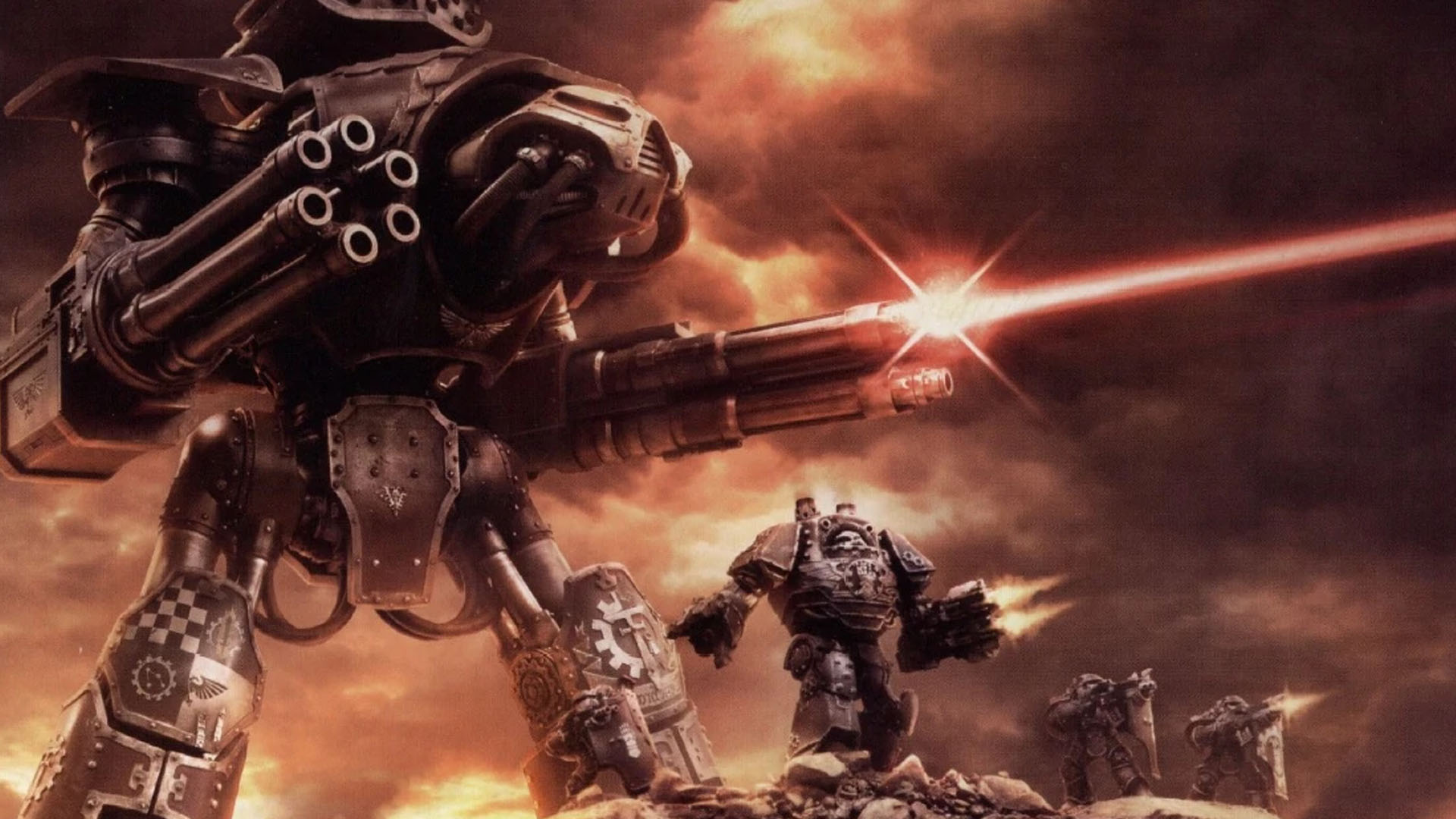
Mecha use the same size measurements as characters. It determinates who can pilot it, as a mecha can only be piloted by a character of a size smaller than itself. Mecha can range from size 1 to 20. This follows the same scale as book 2: from 1 to 10 each point of size is about 0,5 meters, and from 11 to 20 each point of size adds about 2 meters
A Mecha may carry extra passengers that aren’t the pilot if the difference in size is bigger than 1. For example, a vehicle of size 6, which is a small car like a mini, piloted by an average human of size 4, can have 1 extra passenger of this size. If the same shitty car was instead being driven by a big ork or aesimar of size 5 the lad would occupy too much space to let anyone else inside, emphasis on “inside”, as you can still be a mad lad sitting on top of the car.
As there are no rules for characters letting other characters ride on top of them, or about how much equipment and weight someone is allowed to carry, its left to the common sense and discretion of the GM and players to determinate the full capacity of each vehicle just like they would with a regular character.
Mecha of size bigger than 7 cannot use equipment or most items for normal characters that hasn't been modified first. Equipment for big mecha needs to have the modification of Macronized, which is a mod with a cost of 0 that changes the item so that that it can be used by mecha of size bigger than 7 and it can’t be used by characters and mecha smaller than size 7. Some items like artifacts don't need this mod, as they are magically or technologically attuned to adapt and change in size according to the one wielding or carrying the item.
The maximum size for any mecha is size 20, which equals about 25 meters, about the height of a Reaver Titan or the RX-93 Gundam. To be frank it isn’t forbidden to play with anything bigger, up to a maximum size 30 (after which they are considered to enter the rules of spelljammers), but you should ask your GM for permission, considering things so big will disrupt normal play and have trouble interacting with characters.
While size influences the resilience of the mecha, it is by no means all there is, a huge mecha can still be made of paper and have weaker engines than a very tiny one.
4: cockpit.
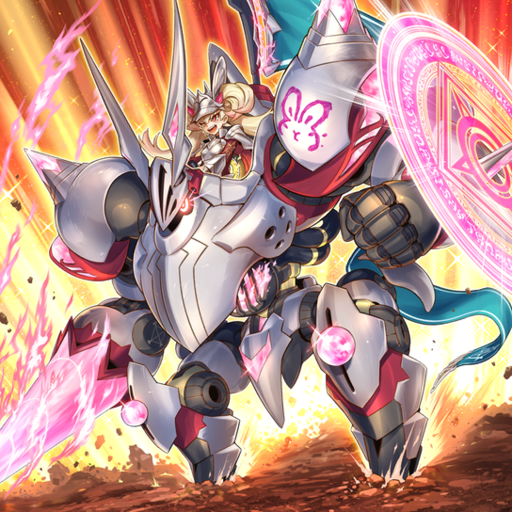
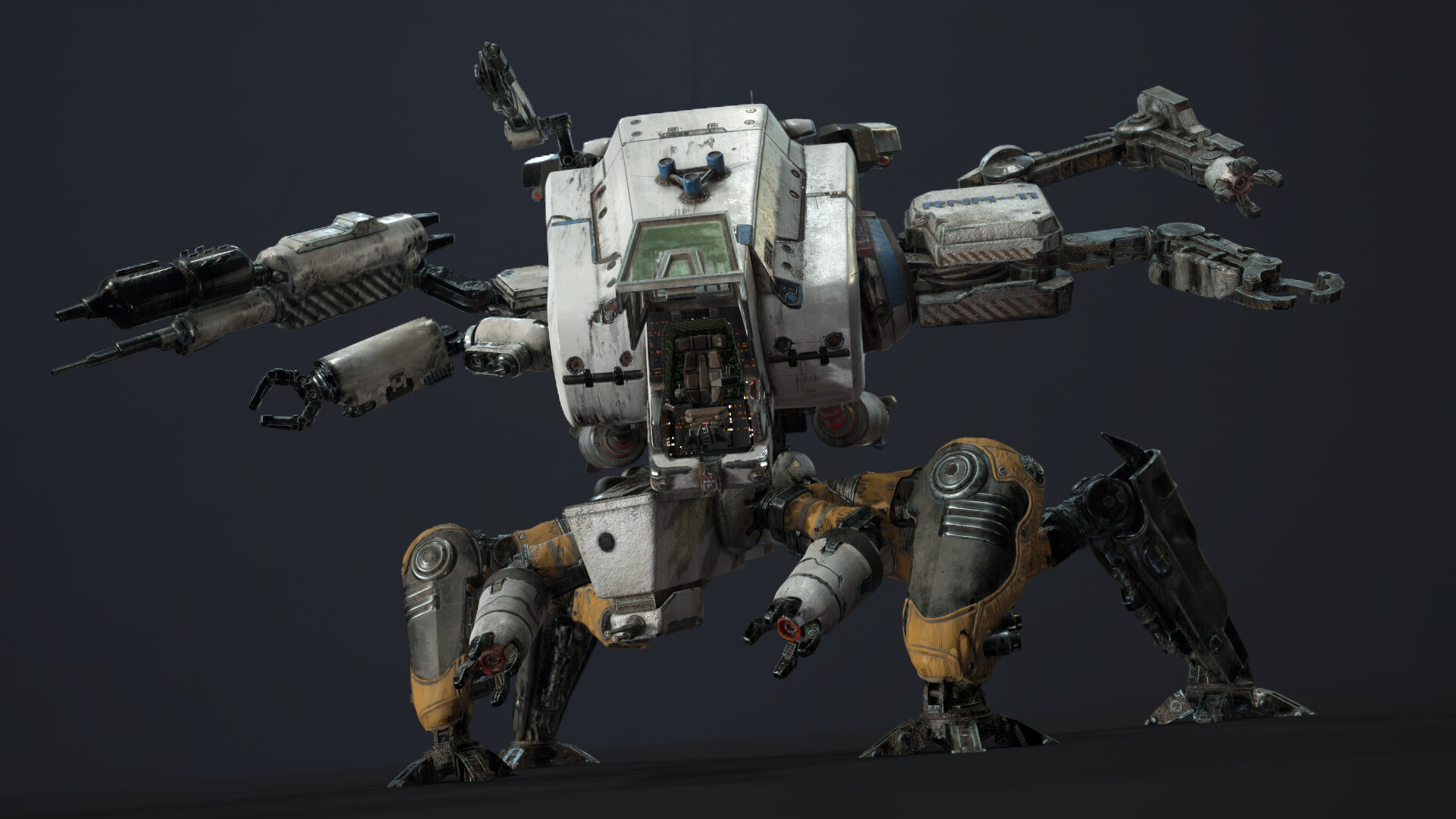
All mecha have a cockpit that allows anyone of a side smaller than itself to control the mecha. When a mecha is hit by an attack, rolling a 10 for hit location strikes this cockpit and deals damage to both the mecha and the pilot/driver inside as well (in which case you roll hit location again to determinate where the pilot was hit)
• Regular cockpit: The pilot is covered from the exterior, with the mecha fully concealing him (usually seeing the outside through a window). It takes a full action to get inside and start controlling the mecha and it takes a half action to leave the cockpit. As a free action the pilot may operate the opening to expose himself to the exterior or close the cockpit again (remember, you can’t do the same action twice, so no opening and closing the cockpit in the same turn even if it’s a free action).
• Saddle: The pilot is more like a rider, as they are exposed to the exterior. Enemies can target and attack the pilot directly and vice-versa. Because this seat is outside (typically on top) of the mecha, it allows characters that are one size bigger than the vehicle itself to ride it (for example, a size 5 aesimar could ride a size 4 bike, funny as it would look). It takes only a half action to man the mecha, and getting off it is a free action that can be done even during movement actions (jump off the bike as its heading towards a cliff!)
• Sealed cockpit: the pilot is completely covered and protected from the environment, seeing what’s outside through a screen. This includes things like toxins, fire, vacuum, the Blast from attacks, etc. Attacks that hit the cockpit only deal half damage to the pilot, who also adds the AP of the vehicle itself to their own armor. The drawback is that it takes 2 full actions to enter or exit a sealed cockpit because all systems need time to activate the environmental seals, plus a half action to start driving
5: Derived stats
• Hit points: Mecha have a number of hitpoints equal to thrice their chassis plus 1.
o If it uses tracks it instead has hitpoints equal to four times its chassis plus 2.
• Resilience: [(Size+Chassis)/2]+1 (rounded up)
o VTOL drive rounds down instead
• Static defense: (Maneuver *5)+10 – (size*2). [Minimun of 5]
To put into perspective, a regular car’s (size 7) static defense goes (depending on the Drive skill of the pilot): 5-6-11-16-21-26
• Speed: Vehicles have a speed equal to three times their power
• Innate Armor: Mecha have the Machine trait, gaining a number of AP equal twice their chassis.
Part 6: Rules and actions in combat:

Control test: Tests to control the mecha are done by rolling Maneuver: roll a number of dice equal to Drive OR Pilot and +1k0 per dot in Dexterity OR Intelligence (whatever the operator prefers). Knowing how to drive or pilot well, having the skill, is infinitely more important than being dexterous or intelligent. Control tests are mostly only necessary at the GM’s discretion.
Mecha have two special actions that normal characters don't have access to:
• FULL SPEED! (half action, movement, provokes): Vehicles with tracks or wheels may move in a straight direct line a minimum of 4 meters up to twice their speed.
• Ram (full action, attack): When using the charge action, a mecha may declare a ram, doing a Bull rush to an enemy at the end of the charge. If you manage to move the enemy takes damage equal to XkY (X= your Power and Y= your Chassis), with your mecha taking half the amount of damage. If you failed to move the opponent your mecha takes the full damage, and the enemy takes half that amount. Remember to maintain the same modifiers, bonuses and penalties to Charge actions (for example with Powerful Charge)
The following actions are slightly modified from characters
• Brace: All mecha have the auto-stabilized trait, so bracing is unnecessary
• Bull rush: Anytime a mecha attempts a bull rush (including the ram action) or are target of a bullrush they may double their effective Power, but in exchange they must move with the pushed target.
• Full auto burst: Because Mecha have the Auto-Stabilized Trait, they may do a full Auto Burst as a half action. However, they won’t receive a bonus to the ballistics test if they do so.
• Dodge: To dodge, do a control test and add half the result to static defense.
• Shift: When shifting, the mecha moves a distance equal to half their speed to a maximum of 6 meters. A mecha with wheel drive may shift to its sides 1 meter only and it takes them a full action
• Standing up from prone: Only Walkers can go Prone. The other Drive Trains are immune to the condition, but they can be Flipped:
>Flipped: When a mecha with Tracks, VTOL or Wheeled drive is affected by an action that would make it go prone if this action suceeds by two or more raises the mecha is flipped. (If its inflicted by failing a saving throw the mecha has two free raises to their save). When flipped, the mecha is is turned upside down, becoming Helpless and Immobilized, and to get back to standing up it needs to pass a Strength test as a half action with TN equal to twice the vehicle’s size. If they don’t have arms or don’t fancy their chances then this test has to be done by another character, or several of them.
By default, a mecha cannot do special attacks nor trick shots without acquiring and installing first a Mobile Trace System
7: ONBOARD AI

Onboard AI are Allies; thus you acquire one with such background. Make a new character following the rules for allies without an exaltation. They also have no backgrounds (no starting dots at least), but in exchange the AI, unlike regular allies, will always be helpful without rarely asking for anything in return. This AI character works as if they were permanently piloting or co-piloting a mecha without occupying any space, using the Power, Maneuver and Chasis of the mecha as their physical characteristics.
Like any character, they go on their own initiative and may take actions related to controlling the mecha as a pilot or copilot (more details in copilot system below). They gain experience points and level up like any other character. The AI can only be directly damaged by mental and similar incorporeal attacks. If the Vehicle is destroyed or the AI is killed, the AI still survives in a backup that may be re-uploaded to the repaired machine, albeit they will gain 1d10 insanity points.
No need to worry, they are not real people
An onboard AI may be transferred to a different vehicle through a datapad if they are willing. Otherwise it has to be done forcefully by breaking their resolution or incapacitating the mecha they inhabit
For a cheaper and simpler intelligence you can adquire an Autopilot System, which is an onboard AI with lower capabilities, described later in the mecha equipment systems
“Oh, playing as an AI sounds like fun!”
Of course, consider making a [program] if you want to play as one.
In fact, an AI may be become a program exalt if they spend 200 exp (as if they had the Dormant Power hindrance), gaining a corporeal body and becoming an enemy of the wheel (rogue agent). By becoming exalted they no longer are able to have their consciouness backed up in case they die, but hey, you can give them a hug now!



